If you’re tired of commercial shampoos and want to switch to something without harsh chemicals, naturally condition hair instead! With simple ingredients like apple cider vinegar, coconut oil, yogurt, and bananas, these tips will naturally condition hair and are cost-effective and perfect for most hair types.

There are many ways you can naturally condition your hair without the use of store-bought natural hair conditioners. Bottled hair care products can often contain ingredients we don’t need even when they claim to be natural.
Instead, you can make your own hair conditioner! Adding a conditioning treatment to your hair care routine will protect damaged hair, reduce split ends, and stimulate hair growth.
I’ll explain the supplies needed to make a homemade conditioner. These recipes will make your hair hydrated, silky soft, and free from tangles!
HOW CONDITIONER WORKS
First, do you remember those old Pantene commercials?
You know, the ones that showed you what “normal” hair looked like under a microscope (a stick with tiny little sticks coming straight off the sides) and then a side-by-side to what hair looked like with Pantene conditioner (a smooth, straight stick without any other sticks coming off of it)?
For those who don’t remember the Pantene commercials, imagine two trees, each with bark. On one tree, the bark sticks up and out from the tree. That’s shampooed hair.
On the other tree, the bark lies flat. So flat that you can barely tell there’s even bark. That’s conditioned hair.
The purpose of the conditioner is to close the cuticles (bark) of the strand of hair (tree), making the cuticles lie down close to the strand and, in turn, create smooth, supple, and manageable hair.
NATURAL HAIR CONDITIONER OPTIONS
Regular conditioner relies on all sorts of weird and unnatural ingredients (such as sulfates, parabens, and phthalates) to do this, but fortunately, you can achieve soft, pretty hair naturally with a few items that you likely already have in your kitchen:
- Acids. Specifically apple cider vinegar, lemon juice, or whey.
- Oils. Nourishing natural oils like olive oil, coconut oil, vitamin E oil, jojoba oil, and argan oil are the most common. Butters like shea butter and cocoa butter work as well.
- Foods: Surprisingly a lot of everyday foods nourish the hair as well! Honey, Coconut Milk, Yogurt, and bananas can make your hair silky soft.
- Cold Water.
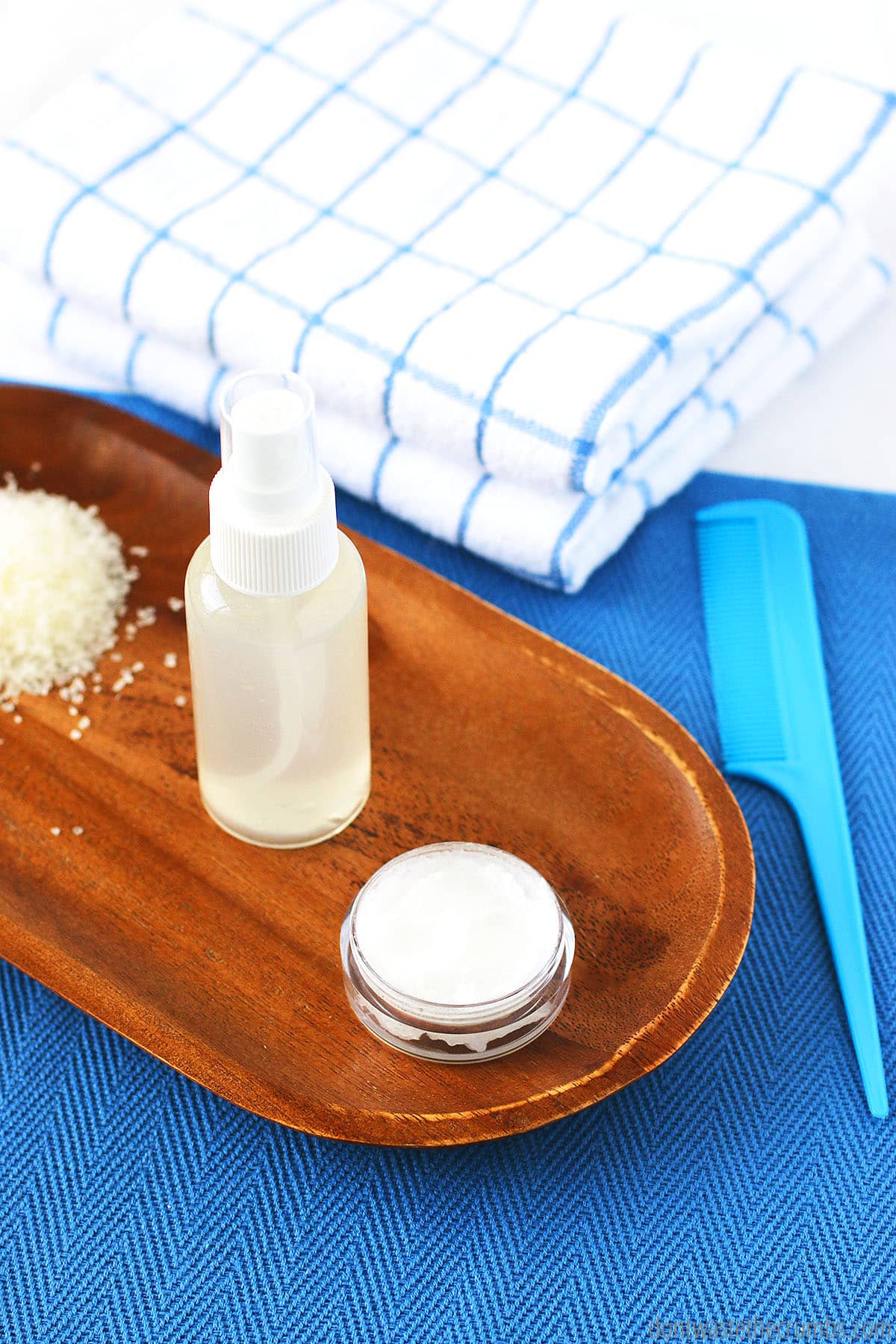
HOW DO I KNOW WHICH NATURAL CONDITIONER IS BEST FOR ME?
I’ve broken this potentially complicated question into three simple questions. Your answers to these questions determine which conditioner is best for you.
- What do you have on hand?
- What can you afford?
- What’s easiest for you?
There is no one-size-fits-all recipe for a homemade hair conditioner that will really truly fit 100% of everyone, so it boils down to having to test out a few options to see which works best for you. And if the above-mentioned oils, butters, and kitchen ingredients all do the same thing, then it just seems logical to start with what you already have, right?
Plus if you use an ingredient that has more than one purpose, you’re doubling your savings!
Lastly, and what I consider most important, what’s easiest for you? Adding a homemade conditioner to your routine does no good if it’s difficult to make. We want this natural living baby step to be effective, yes, but it needs to be easy in terms of practicality.
DIY CONDITIONER RECIPES
Hair conditioner is typically used after shampooing the hair. A few of these methods are for deep conditioning on dry hair before washing. Read the directions on each to see the correct order needed to wash and condition your hair.
You can use a no-shampoo method to wash your hair, or a natural shampoo without sulfites or parabens (this is the brand I like).

APPLE CIDER VINEGAR RINSE
SUPPLIES
- 2 Tbsp apple cider vinegar (how to make it at home)
- scant 16 oz water
- 16-ounce glass jar or spray bottle
METHOD
Combine the ingredients in a 16 oz glass jar and shake well to combine. To apply, shake well and pour directly on the hair after shampooing. Rinsing is optional.
RECIPE NOTES
You might need less or more acid, depending on your hair type. If your hair tends to be dry, rinse out the vinegar with cool water. You can also detangle with a slight amount of coconut oil on the ends of your hair.
Turn this simple conditioner into a nourishing conditioner by infusing the water with herbs like marshmallow root or flaxseed. Simply use the herb infusion technique described in this post and swap it in place of the plain water in this recipe.
This recipe can be used 2-3 times per week.
COCONUT MILK DIY HAIR CONDITIONER
SUPPLIES
- 1 Tbsp Coconut Milk
- 1 Tbsp shampoo
METHOD
Mix Coconut Milk and shampoo in a small bowl. Apply to wet hair as you would plain shampoo. Work into the hair and massage into the scalp. Rinse with warm or cool water. Condition with an apple cider vinegar rinse or other conditioner if desired. If needed, apply ½ Tbsp of coconut milk to your hair as a leave-in conditioner.
RECIPE NOTES
Coconut milk is a natural conditioner for hair that helps to soften and smooths the hair while reducing itchiness or dryness on the scalp. Using a natural shampoo like Kristin Ess will help clean and condition the hair naturally.
This recipe can be used 2-3 times per week.
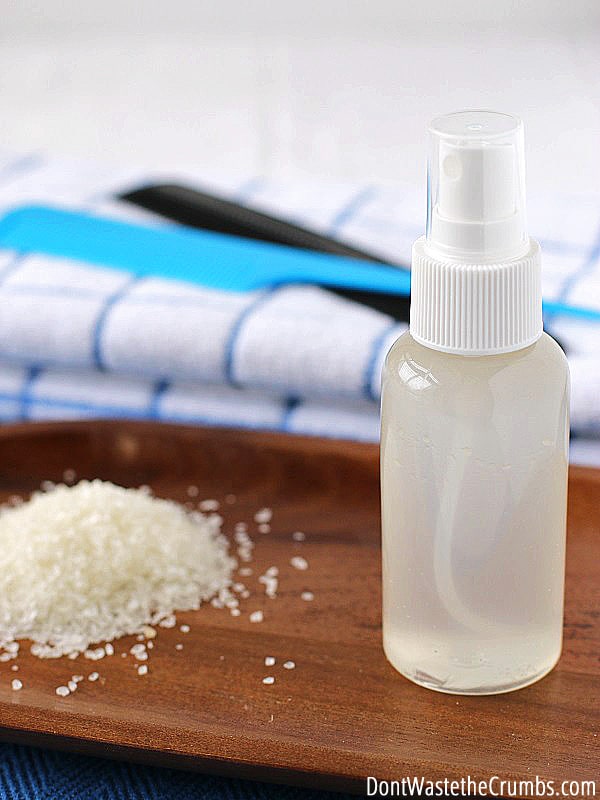
Homemade Hair Conditioner with Banana
SUPPLIES
- 1 ripe banana
- 2 Tbsp olive oil
- 1 Tbsp honey
- Shower cap (optional)
METHOD
Mash the banana in a small bowl. Mix in olive oil and honey and stir until smooth. Apply to your hair, working in sections if needed, until everything is covered. Allow to rest for 20-30 minutes. Use a shower cap if desired to prevent drips. Rinse with cool water and a mild shampoo.
RECIPE NOTES
Bananas will help make your hair shinier and give hair extra bounce. The olive oil deeply moisturizes the hair and scalp.
This recipe can be used once a week.
ALOE VERA BANANA HAIR CONDITIONER
SUPPLIES
- 2 Tbsp aloe vera gel
- 1 ripe banana
METHOD
Mix aloe vera and mashed banana until smooth. Apply to clean damp hair. Massage deeply into the scalp. Let rest for five minutes. Rinse with warm water.
RECIPE NOTES
Aloe vera promotes hair growth and strengthens your hair. It soothes the scalp, adding necessary moisture without being greasy. Bananas help make hair shiny and soft and smooth curls that tend to frizz.
This recipe can be used once a week.

Natural Conditioner with YOGURT
SUPPLIES
- 1 egg
- 1 tsp coconut oil, melted
- 2 Tbsp Yogurt
- Shower cap
METHOD
Whisk ingredients together in a small bowl until smooth. Apply to damp hair and massage into the scalp. Cover with a shower cap and allow to rest for 15 minutes. Wash off using cold water.
RECIPE NOTES
Yogurt rejuvenates rough hair and helps reduce hair loss. The coconut oil works as a deep conditioning treatment for dry hair.
This recipe can be used every two weeks.
Honey Olive Oil Hair Mask
SUPPLIES
- 2 Tbsp honey
- 4 Tbsp olive oil
- Shower cap (optional)
METHOD
Mix honey and olive oil in a small bowl. Apply to hair, working in sections if needed, until fully masked in honey mixture. Allow to rest on your hair for 20-30 minutes. Use a shower cap if desired to avoid the mask from dripping on you. Rinse with warm water and a mild shampoo.
RECIPE NOTES
This recipe is best as a deep conditioner to hydrate and nourish your hair. It works to help prevent dandruff as well as it moisturizes the scalp.
This recipe can be used 2-4 times per month.
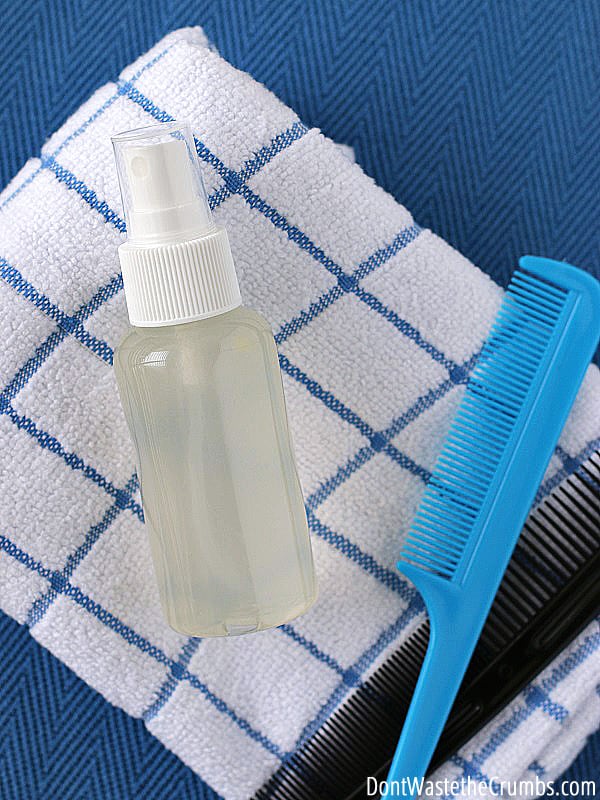
FAQs to Naturally Condition Hair
Can I add essential oils to homemade conditioner?
Absolutely! Some great options are lemon, lavender, rosemary, tea tree, sandalwood, peppermint, and bergamot!
How can I customize DIY hair conditioner?
If you have dry or frizzy hair, add argan oil to any recipe to make it more nourishing. If you have a dry scalp, add tea tree essential oil to help combat dryness. On the other hand, if you have oily hair, you can leave out the oils and only use apple cider vinegar and water. If you want a sweeter-smelling conditioner, add lavender essential oil.
Can I make a homemade leave-in conditioner with this recipe?
Absolutely! You can add some aloe vera as a moisturizing agent to keep your hair follicles conditioned for longer!
What types of hair can use this conditioner?
Any hair type can benefit from DIY conditioner:
Curly hair
Oily hair
Fine hair
Dull hair
Straight hair
Dry hair
Naturally Condition Hair
There you have it! Now you have everything you need to naturally condition hair! Say goodbye to toxic ingredients and hello to a DIY hair conditioner that will give you the smooth, healthy hair you’ve always dreamed of! If you try this recipe, let me know what you think in the comments!
More Natural Hair Care Tutorials
- How to Wash Your Hair Without Shampoo
- Simple DIY Liquid Herbal Shampoo
- DIY Homemade Herbal Shampoo Bars
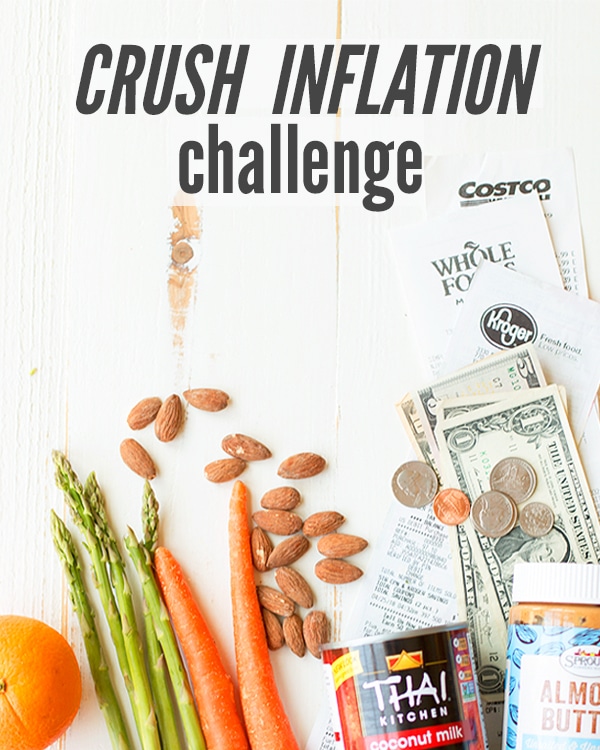
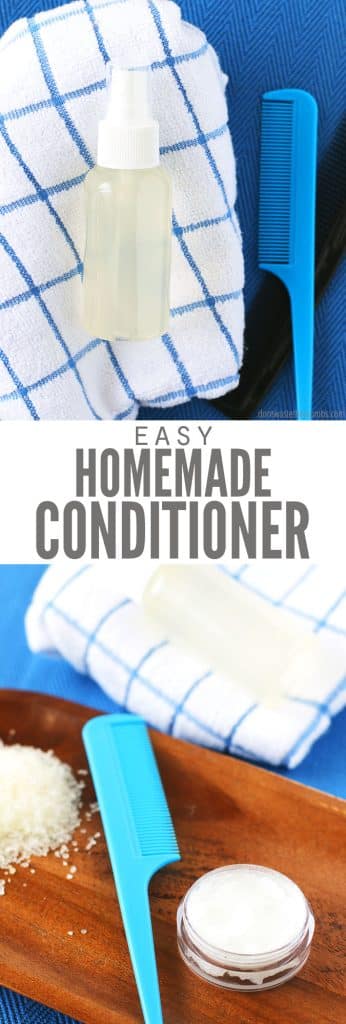
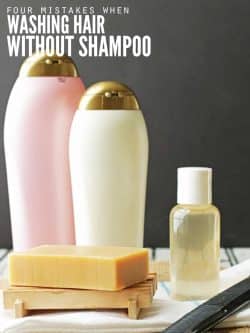
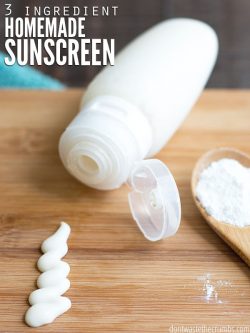
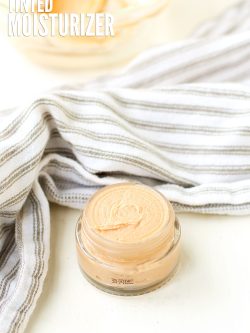
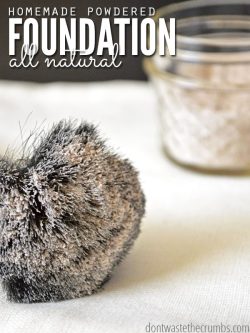
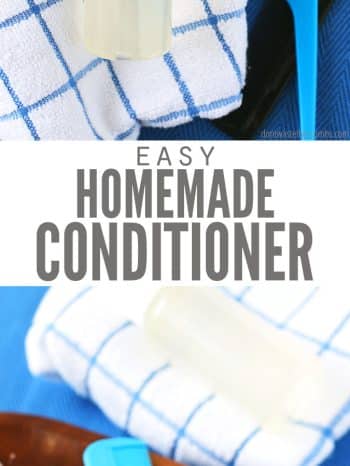
Hi
Thanks for this. I am about 2 weeks in using only homemade soap. My hair is a grease pit. Your info was valuable. One question. At the end of the conditioner section you mention the cost of lemon juice, but i didn’t notice it being mentioned earlier. How are you using the lemon juice?
Thank you againg, Grant
There is a transition period when you opt out of chemical, making you dependant on their products, laden shampoos. Bear with it. Your body was meant to NOT have all those chemicals and when it realizes it’s not being subjected to them anymore, things work out beautifully, but in the beginning, it’s a long wait of OMG HAIR! Good luck; it’s worth it.
Ok, I’m going to throw everyone a curve here. I’m a guy with a fairly large beard. From your pic Tiffany, my beard is longer than your hair easily. Plus it’s the really kinky hair. I’ve got 2 problems. 1st is that being right under my nose, ACV gets kinda strong. 2nd I’m allergic to coconut to the point of an epipen and ER trip. I need something that’s going to help condition my beard, I already make a leave in oil with jojoba, apricot, argon and sunflower oils but I really need a conditioner. Any advice you can help with? Oh and as a bonus, I’m also a real bearded Santa so the smell of ACV isn’t really popular with the kids.
What about another acid, like lemon juice or whey? Or have you tried using essential oils? Geranium and lavender are great for hair!
Hi
What are YOUR suggestions?
Wondering if MCT oil could be used in place of coconut oil so it won’t get solid when it’s cool?
Absolutely LOVED this post, I’ll have to try out your recipe!
Thanks!
I hope I didn’t miss this already being answered in the comments above but why is it necessary to do a COLD water rinse after this conditioner? 🙂 Otherwise I am LOVING the goat milk soap and DIY conditioner – thank you thank you thank you!!!!
Cold water helps to seal the cuticles Krista. You CAN use warm, but you’ll get better “conditionerized” hair if you rinse with cold. 🙂
Rice water is a popular natural hair conditioner in Asia. It’s the white water left after you wash your rice prior to cooking.
Interesting! I hadn’t heard of that, but it’s worth a shot!
Awesome blog and great humor! 😀
Never occurred to me in my 50 years to make my own apple cider vinegar from all the cores I discard after juicing! Brilliant!
Thanks Katherine! 🙂
I have red hair and am concerned that ACV will bleach my hair (I remember friends using lemon juice when we were younger to get blonde highlights). Do you know if this a side effect?
Thanks!!
Not a side effect at all Shira!
I am interested in trying this. How much do you put on your hair? Can it be put in a spray bottle to apply to hair?
I put about 2-3 oz on my short hair (diluted), and yes you can put in a spray bottle. I actually prefer that method myself!
I know the AC vinegar works well for my hair but, it still left me with a frizzy mess of hair. I have finally found a PH balanced no-poo recipe that works.
1 can of coconut milk
1-3/4 cup aloe gel
mix together and freeze into cubes, melt before shower and scrub into hair and rinse. I have gone 4 days only using the coconut aloe mixture. Normally I would be using a leave in conditioner or something to hold my hair so it isn’t all over the place. Since using it, I haven’t had to use any leave in conditioner, just a few bobby pins to hold the shorter hairs back.
I would like to try this. You gave an amoint for the aloe vera but not the coconut milk. How much coconut milk do you use?
I realize you said one can but how many ounces are in the can you reference?
Tiffany, I’m kind of confused. The conditioner ingredient list has 2 items listed but step one in the written directions say to combine all three ingredients. Is there an ingredient missing from the list that should be shown? Thanks for any help you can provide!
Christine
Sorry Christine! I altered the recipe slightly, omitted lemon juice and using all ACV instead (we’ve been testing out both and this new formula seems to be easier, and work a bit better). I’ll update the instructions. 🙂
Thank you for this DIY Conditioner recipe. I have fine, long, straight hair to the bottom of my back. I’m so amazed that it feels like straw in the shower but after rinsing and towel drying, it combs through with minor tangles on the ends. I’m a convert and I tell everyone about it. As you mentioned, I put extra coconut oil on the ends on days that I’m staying home then wash & rinse the next day 🙂
Hi, I am transitioning from tinted hair to going gray! I have been using baking soda mixed with a ‘blue tint’ shampoo to help remove the gel that I put in as a heat protector (what a vicious circle), however once I have lost the last of the dry coloured tips to my hair I hope to not have to be so fussy with its care. In my much younger days I would infuse rosemary into rain water to rinse my hair with. (I had very very dark hair). I love the ACV rinse, but hated the smell of vinegar if my hair got wet in the rain or when I went to the hairdresser (I always found it embarrassing), so I added a few drops of lavender EO … problem solved!
I use baking soda for my facial and body scrub every few days, it is the best, even better than microbrasion. My husband hasn’t used shampoo for nearly a year, but still gets a slightly flaky scalp, so he now gets a teaspoon of baking soda, makes to a paste in the shower and voila!! That is his shampoo. I am going to try the ACV rinse again when I wash my hair in the morning … it is a tangle to comb the dried ends until they get cut out. My natural gray is lovely soft and shiny though!
Thank you for your post – I love finding this kind of information shared for free xx
You’re most welcome Catherine 🙂 Thank you for sharing your experience with us!
Do you just mix the baking soda with water to form a paste as a facial scrub, then rinse off? Same with using it like a shampoo, too?
Hi Marci, yes that is exactly what I do. I just sometimes dip my damp fingers into the baking soda container if it is a morning scrub, or if I want a more intense scrub in the shower (e.g. I do back of my neck set – as opposed to harsher scrubbing!) I will put a about a teaspoon and a half in my hand and dribble a small amount of water in to make a paste. It probably depends how sensitive your skin is as to how much you use! If i use BS as a shampoo, I put about two teaspoons of BS into a plastic bottle, and fill it with warm water and shake it well to “dissolve” the baking soda before applying to my hair. It is probably a 400ml bottle I use.
I hope that answered your questions!! x
and I’m going to try the b/s paste on my legs. I am a water only showerer, but my lower legs still are dry, and flaking all the time. The rest of my body has adjusted. THANKS for the suggestion, as I’m a firm believer in baking soda, from laundry to face mask!
Charlotte Cee
Do you have any recommendations for herbs to infuse? I am really interested in working this way, but I have so much to learn 😉
Hi Leah – did you see this post?
https://dontwastethecrumbs.com/2015/02/simple-diy-liquid-herbal-shampoo/
There are a few recommendations for herbs, depending on your hair needs!
I have been using baking soda as my shampoo for more than 3 years and ACV as the rinse, with a cool water rinse. My hair has NEVER been healthier or softer than it is now and I am 54 yes old. I also only use basking soda as my face wash and have had clearer skin as well. Have always had adult acne, until BS came into my life.
Thanks for sharing BrendaLea! I hadn’t heard of baking soda as part of a facial routine. That’s a great tip!
I use baking soda and coconut oil as a face scrub. I love how how soft it leaves my skin!
I always use baking soda and raw, unfiltered honey as a wash in the shower and maybe once a week, I leave it on a little longer and then continue with my routine of massaging it into my face in circular motions like a facial scrub. I rinse and wow! My skin is soft and clear and feels great. Once every couple weeks, I add cinnamon to the mix because it energizes my pores so my skin feels revitalized.,I also have bentonite clay I make a mask with once every couple of weeks, mixing it with honey and/or yogurt to moisturize my dry skin. The only moisturizer I use at all is coconut oil, so I go pretty natural. All winter long my skin never gets that dry and scaly feel and appearance that it used to with commercial lotions, which I blame on the drying alcohol they almost all contain. I do use some Castile as my shampoo sometimes but other then that, only makeup am I guilty of, lol. And I’ve never felt better. ACV is great taken internally too, if you can stomach it. Keeps your health awesome!
hi. I’ve used baking soda for years for almost everything. I tried the no poo with b/s and found it too drying to reverted to water only washing and maybe once a month, b/s, followed by acv, to balance pH. When I want a true mask on my face, oily, large pores, I use fresh lemon juice, b/s and raw honey. Put on face for however long, doesn’t matter, but at least 1/2 hour, and then rinse, followed by witch hazel astringent to re-balance pH. I love the mask, a/c vinegar, lemon, and baking soda, although again, too drying for hair. Will buy a bottle of Jojoba oil as it is NOT A NUT, and therefore, NOT AN OIL (I can’t use ANY OIL/body totally intolerant. I have been using marula oil but it’s just too expensive.
anyway, hope this helps.
I think it is great that your flax gels so well! I use it to replace eggs and never get it to gel that well! Anyway, next time you experiment you can throw the gel in your pancakes instead of down the sink 🙂
I find that the best way to avoid dry hair is not to shampoo it every day. Saves time and money too 😉
I tried using the flax seed & water combo to make a homemade hair gel substitute once. I don’t think my hair would care for that as a conditioner, though. Like you said, everyone’s hair is different. What I have found that does work for me just so happens to have finally given me the happiest hair I’ve ever had. I make my own shampoo bars for washing – not as frugal as no poo, but way better than buying a good shampoo. Then I condition with an ACV rinse. I’ve never had an issue with it leaving my hair dry. Maybe it’s because I infuse the ACV with marshmallow root and lavender first? Not really sure, but I’m super happy with this system.
Great post!
What do you use for hair gel? I have curly hair and feel like my natural shampoo would work better if it wasn’t for the gel!
Www.naturlycurly.com. I have used flax seed to make hair gel. Put them both in pan on stove and heat on low until mixturethickens. I let it cool a bit, then pourr it into a clean knee high hose (walmart 50 cents) and use a pair of tongs down the length to get the gel out. Good stuff.
And toss the shampoo. You can wash your hair with conditioner, even sweaty, grubby kid hair. Only time shampoo is used on my hair is when I have it colored. 3 or 4 times a year. And my stylist knows.
There are a lot of recipes on the net for flaxseed gel.
I tried making the flaxseed gel but it does nothing for my curly hair. No hold at all. Doesn’t even eliminate frizz. I think for me, it might work better as a detangler.
Hi, I am a curly head too (type 2B to be exact) and am having the same problem going totally natural! Did you ever find a product to help hold your hair and keep the Grizzlies away??
I use gelatin and it works pretty well on my curly hair.
I mix 1/4 tsp gelatin with 1/4 cup of boiling water and store it in the fridge.
It lasts about a week if kept in the fridge. I use about a dime size amount to scrunch my hair after I get out of the shower. I find I like to use the hair dryer to finish drying it as it can be very crunchy if I don’t.
Yup, I use gelatin + hot water mixture for my very-curly hair too (in addition to being no poo + ACV conditioner rinse). Works great for me.
For the gel, I combine 1 tsp gelatin with 2 cups hot water, add some essential oils & sometimes a Vit E capsule. BUT very important — the shelf life isn’t very long, and it starts to smell if you leave it in your bathroom for a week+. So I leave a larger mason jar of it in the fridge and keep a smaller jar in my bathroom, which I replenish as needed. I used to use flax seed, but I like gelatin better.
I have been doing the diluted ACV with water rinse once or twice a week for almost two years now. I also only use local, handmade soap for my “shampoo” and both this winter and last my hairdresser has commented that my hair has not been nearly as dry and damaged as her other clients. I have very curly hair that frizzes with any sort of humidity, so her comments were music to my ears! If my hair starts to look nappy or greasy I just make sure to rinse with diluted ACV the next time I shower.
I also use shampoo bars. I love not buying something in a plastic bottle! And I rinse with ACV about once a week. My hair is very soft and healthy (even though it is very thick and coarse.) And I use jojoba oil with some 100% argan oil mixed in. I put a little bit of the oil on my hands, rub it around, and then rub it on my hair focusing on the ends. Then brush, brush, brush to distribute the oils well. This routine is great for my hair.
Hi Claudia, do you rinse your hair after applying the oils and do you apply them on wet or dry hair? Many thanks
I’ve been using the baking soda/apple cider vinegar combo for a while, and was especially surprised with the ACV. I have THICK, past-shoulder-blades hair, and I thought I had to drench it with conditioner all the time to make in manageable and keep it semi-untangled.
Glad I’ve found another method! Glad the ACV is working for you guys, too.
My only issue is that I do rinse it out once detangled in-shower because I prefer not to have hair that smells like ACV! Any recommendations there?
Recommendations for the smell? Maybe create an infused ACV using this method: https://dontwastethecrumbs.com/2012/07/diy-citrus-infused-vinegar/, maybe with orange peels or lemon peels? How awesome that it’s working for your thick, long hair too!!
I make the ACV rinse all the time. I like to add vegetable glycerin tor more moisture. And I also add essential oils because I don’t like the smell of the ACV. When I rinse it out, no more vinegar smell!
If you want to make flax seed gel, you have to boil the flax seeds and you a cheese cloth or panty hose to separate the seeds from the gel.
I found this after reading you article and thought I share what I found. In the comments folks were also having the problem straining the flax seeds and it was recommended to put the seeds in a large tea ball or panty hose while boiling in order to skip the straining step/problem. I am excited to try this conditioner on my hubby’s hair. He has a ton of crazy uncontrollable curls.
http://www.instructables.com/id/Homemade-Flaxseed-Hair-Gel-for-Curly-Frizzy-Hair/
Thanks for sharing this!!
Great idea!
I bought citric acid powder and put it in my bath water to soften it. After reading your article, I ott some conditioner in my hand and mixed it with a bit of citric acid powder.
I then brushed it through before rinsing. It seemed to really help! I have heard that Couric acid will strip dyed hair color, though.